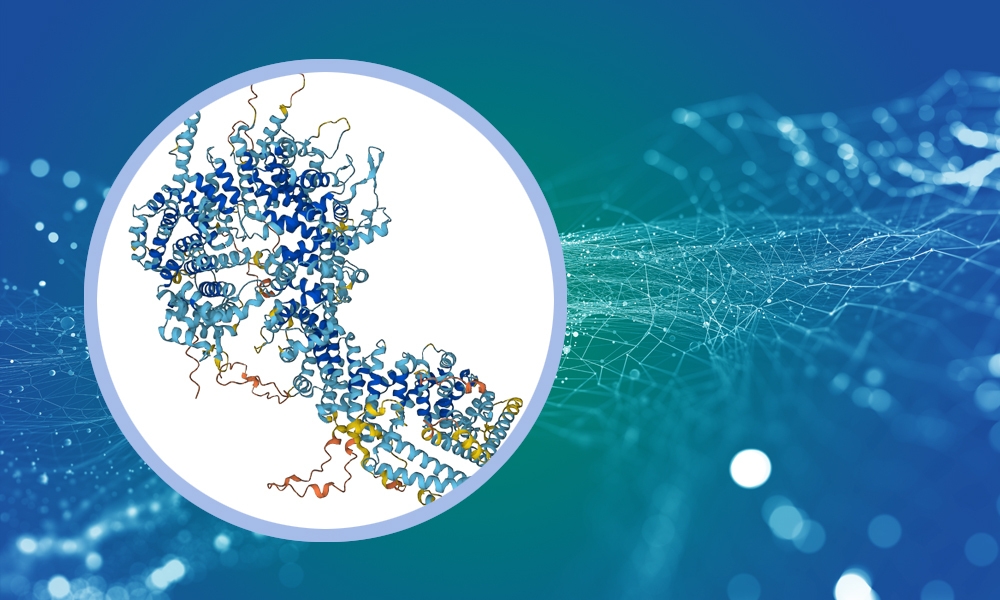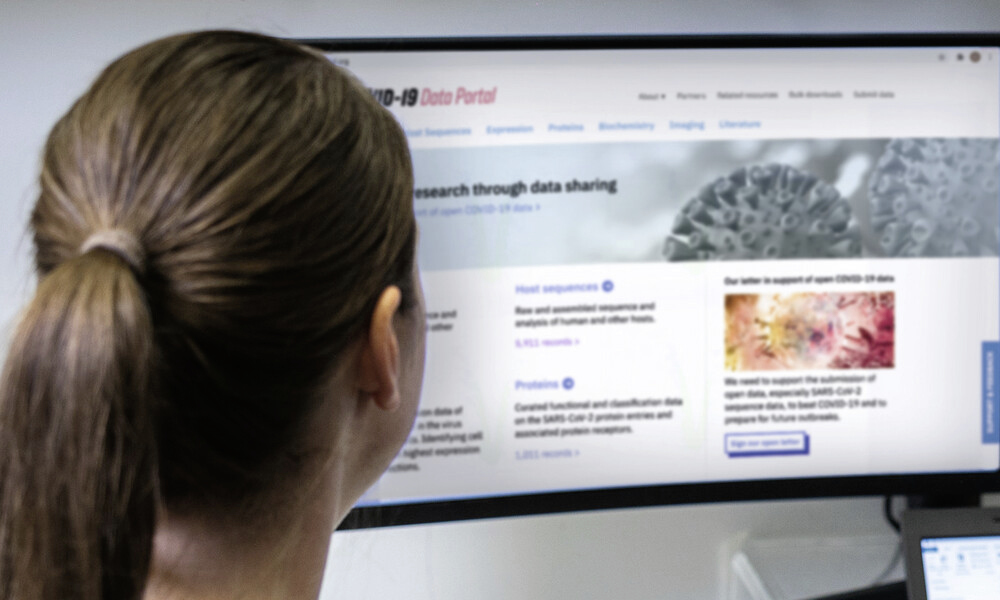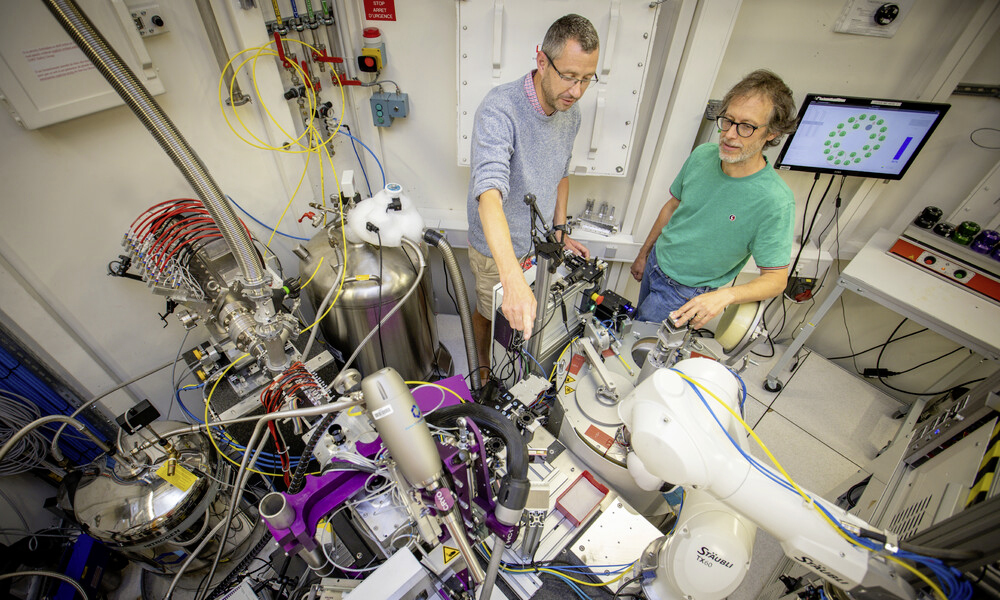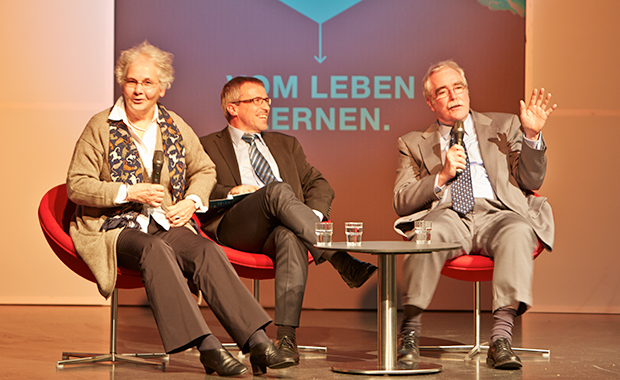Exploring the secrets of life is what EMBL does every day. With global impact and an infinite amount of curiosity, EMBL is a powerhouse of biological expertise. Here are some of our most noteworthy impacts since our establishment in 1974.
cryo-em
Sparking a revolution in structural biology
In the early 1980s, EMBL Heidelberg Group Leader Jacques Dubochet and technician Alasdair McDowall discovered that flash-freezing proteins in liquid ethane could preserve their structure during microscopy – a process called vitrification. It was a critical advance that laid the groundwork for the rise of cryo-EM and brought Dubochet and two other scientists the Nobel Prize in Chemistry in 2017.
Today, cryo-EM is game-changing, enabling large molecules to be imaged quickly and facilitating the development of new drugs and vaccines. Scientists from around the world have used cryo-EM to determine virus structures responsible for some of the world’s greatest disease threats, such as hepatitis B and C, Zika, dengue, and tick-borne encephalitis. In 2020, cryo-EM also yielded precise images of the virus that caused COVID-19, assisting vaccine development.

data resources


Ensuring open access to data that fuels tomorrow’s findings
EMBL-EBI is a global leader in the storage, analysis and dissemination of large biological datasets. It collaborates with organisations worldwide to ensure comprehensive, meaningful digital data libraries.
The COVID-19 pandemic clearly showed how important it is to science and society to have a robust infrastructure for data access and sharing. In response to the pandemic, EMBL-EBI intensified its efforts to share molecular data for SARS-CoV-2. The institute set up the COVID-19 Data Portal, which offers open access to millions of relevant data records, ranging from sequence information and gene expression data to up-to-date literature records and cohort data.
An independent impact study showed that EMBL-EBI-managed data resources are critical to global research and development, with 32% of respondents saying they valued EMBL-EBI resources even more after the pandemic.
The carefully curated and information-rich data managed by EMBL-EBI served as the perfect training ground for Google DeepMind’s revolutionary AI system AlphaFold, which has produced accurate predictions for the structure of nearly all proteins known to science. EMBL-EBI and DeepMind worked together to make all AlphaFold predictions freely and openly available to the world. These cover proteins from all species, including humans, plants, bacteria, and animals, opening up new research avenues across the life sciences, and supporting the development of solutions for global challenges.
tools
Pioneering tools that improve research for all
Scientific breakthroughs are often only made possible through innovative technological developments. And EMBL Grenoble’s scientists are extremely deft at technological improvements that – for example – make beamlines and synchrotrons work even better. It’s why the partnership between EMBL Grenoble and the European synchrotron, ESRF, has played a significant role in developing and advancing cutting-edge crystallography technologies used in biosciences and medical research. By collaborating with the manufacturer Arinax, researchers and engineers from EMBL Grenoble helped commercialise this pioneering instrumentation and automate the entire sample-handling process.
The inventions include micro-diffractometer devices, which enable automated, high-precision positioning of protein crystals in an X-ray beam, significantly increasing the efficient use of beamtime at synchrotrons. As of 2021, Arinax had installed micro-diffractometers in over 15 synchrotrons around the world. The ability to adjust technologies to researchers’ needs is just one reason why instruments developed at EMBL are – and will continue to be – widely used by the scientific community.

genomics

Transforming developmental biology to pave the way for discoveries in cancer research and beyond
In the early 1970s, EMBL group leaders Christiane Nüsslein-Volhard and Eric Wieschaus performed large-scale genetic screens to look at mutations affecting the patterning of early fruit fly development. These mutations were mapped to 120 genes, providing a blueprint for our understanding of many fundamental developmental processes. Most of these same genes are now known to be conserved in humans and are essential for our understanding of human diseases.
This foundational work would later be recognized with a Nobel Prize “for their discoveries concerning the genetic control of early embryonic development.”
From understanding RNA to improving how we treat disease
In the 20th century, the world battled three influenza pandemics: in 1918, 1957, and 1968. Since then, molecular biology has made important strides in understanding these RNA-based viruses. Beyond viruses, RNA is central to many fundamental processes in the cells of living organisms. Unsurprisingly, the breakdown of RNA-related processes is therefore associated with a myriad of diseases, emphasising the importance of understanding the complex biology of RNAs.
EMBL – since the mid-1980s – has been at the heart of advancing RNA research, contributing significantly to unravelling the complexities of RNA-mediated biological mechanisms. Specifically, EMBL’s structural biologists provided insights into the biology of RNA-based viruses such as the influenza virus, opening new doors to structure-based anti-influenza drug design that ultimately created Savira Pharmaceuticals, a company dedicated to identifying and developing effective anti-influenza drugs.
This kind of research also demanded the progression of state-of-the-art techniques at EMBL, such as cryo-EM, to see the molecular mechanisms behind RNA’s participation in essential cellular processes in unprecedented detail. During the recent SARS-CoV-2 pandemic, EMBL research helped better understand this RNA-based virus. Studies using cryo-EM, for example, enabled scientists to understand important structures of this virus to develop effective COVID-19 vaccines. Additionally, EMBL RNA research over the decades has been fundamental to our current understanding of RNA-splicing mechanisms, nuclear-cytoplasmic transport, mRNA translation, RNA stability, and intracellular transport. More recently, EMBL scientists spearheaded the discovery of RNA binding proteins and riboregulation.

The above represents but a small sample of the pioneering and impactful contributions EMBL has made to the life sciences during the last five decades. For more updates on new research and technologies from EMBL, please visit our news page and subscribe to our monthly newsletter.
Edit